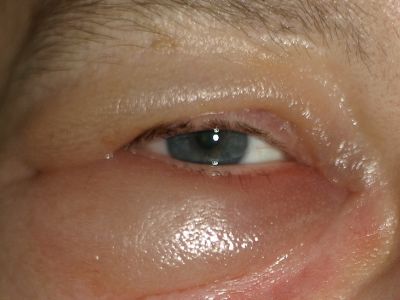Conjunctivitis: Symptoms, Types, Causes, and Treatment

What is Conjunctivitis?
Conjunctivitis, also known as pinkeye, is an inflammation of the conjunctiva or the thin clear tissue that lies over the white part of the eye and lines the inside of the eyelid. This condition is common in children and can be contagious. Nevertheless, this condition is rarely severe and unlikely to damage vision.

Signs and Symptoms of Conjunctivitis
- More tears than usual
- Thick and yellow discharge that crusts over the eyelashes
- Redness in the white of the eye or inner eyelid
- Swollen conjunctiva
- Green or white discharge from the eye
- Itchy eyes
- Burning eyes and blurry vision
- More sensitive to light
- Swollen lymph nodes caused by viral infections
Seek immediate help if you or your child experience any of the following symptoms:
- You have severe pain in your eye when you look into a bright light
- There’s a lot of yellow or green discharge from your eye, or if your eyelids are stuck together in the morning
- You have a high fever, shaking chills, face pain, or vision loss.
- Your vision is obviously affected by pinkeye
Types of Conjunctivitis
- Allergic conditions. It occurs more commonly among people who already have seasonal allergies. The condition occurs when their eyes are triggered by an allergic reaction to a substance.
- Viral type. It is most commonly caused by contagious viruses associated with the common cold. A person with an upper respiratory tract infection can spread it by coughing or sneezing. Viral conjunctivitis can also occur as the virus spreads along the body’s own mucous membranes.
- Ophthalmia neonatorum. It is a severe form of bacterial conjunctivitis that occurs in newborn babies. If not treated immediately, this condition can lead to permanent eye damage. Ophthalmia neonatorum occurs when an infant is exposed to chlamydia or gonorrhea while passing through the birth canal.
- Giant papillary type. It is caused by the chronic presence of a foreign body in the eye. This form of conjunctivitis is more common among people who wear hard or rigid contact lenses, wear soft contact lenses that aren’t replaced frequently, have exposed sutures on the surface of their eye, or have a prosthetic eye.
- Bacterial type. It is caused by bacteria from your own skin or respiratory system. Insects, physical contact with other people, poor hygiene, or using contaminated eye makeup and facial lotions can also cause the infection.

What Causes Conjunctivitis?
- Bacterial or viral infection or also known as an infective type
- Allergic reaction due to pollen or dust mites
- Direct contact with eye irritants such as shampoo or chlorinated water, or a loose eyelash rubbing against the eye
Treatment and Management of Conjunctivitis
The appropriate treatment for this depends on its cause.
- Conditions caused by allergens
The first step is to remove or avoid the irritant, if possible. Cool compresses and artificial tears sometimes relieve discomfort in mild cases. Antihistamines and nonsteroidal anti-inflammatory medications may be prescribed in more severe cases.
- Conditions caused by infections
This condition is usually treated with antibiotic eye drops or ointments. Bacterial pinkeye condition may improve after three or four days of treatment, but patients need to take an entire course of antibiotics to prevent a recurrence. However, no drops or ointments can treat conditions caused by viral infections. Like a common cold, the virus has to run its course, which may take up to two or three weeks. Symptoms can often be relieved with cool compresses and artificial tear solutions.
- Conditions caused by chemicals
It is treated with careful flushing with saline. People with chemical conditions also may need to use topical steroids. In the case of severe chemical injuries, particularly alkali burns, scarring, damage to the eye or sight, or even loss of sight can occur. If chemical spills in your eye, flush the eye for several minutes with a lot of water before seeing your medical provider.
Medication Used for Conjunctivitis
Promethazine. It is a phenothiazine derivative used in the treatment of rhinitis, pinkeye, and mild and uncomplicated allergic skin reactions. Promethazine is an H1 selective antagonist that exhibits sedative and antiemetic properties.



